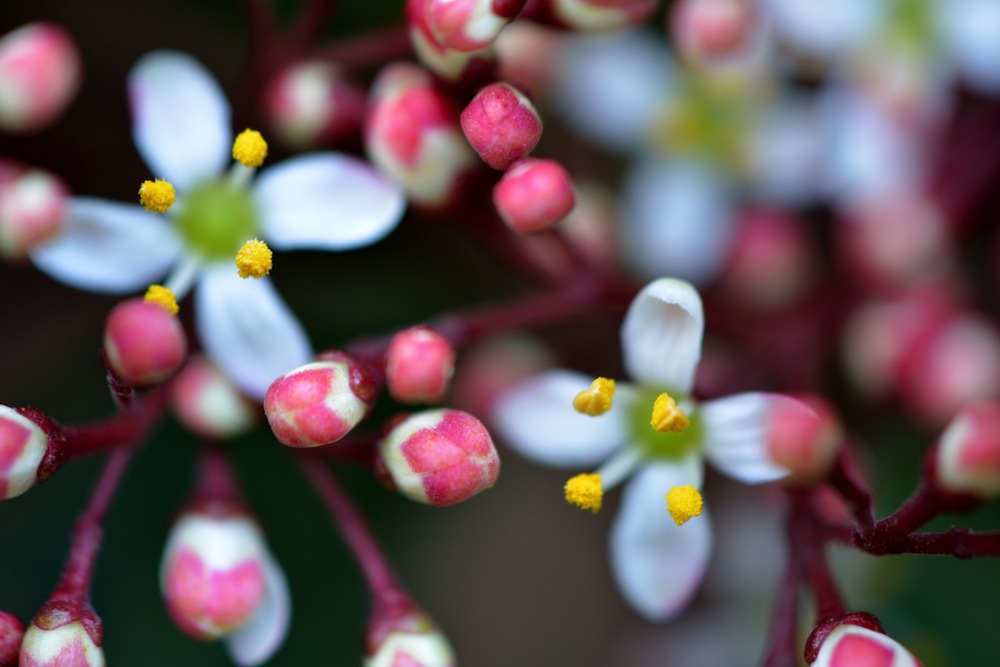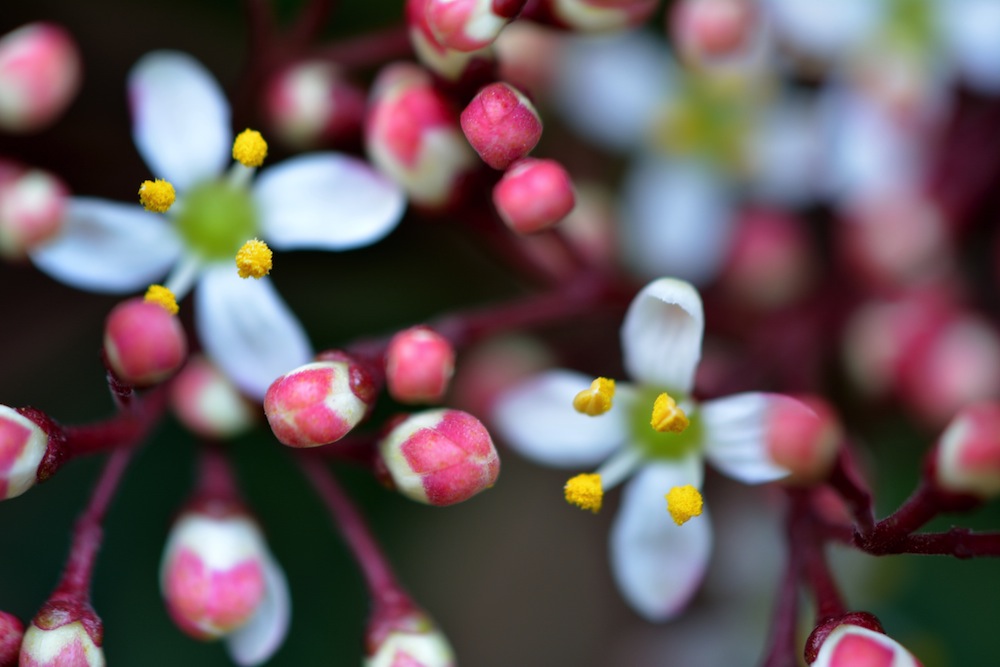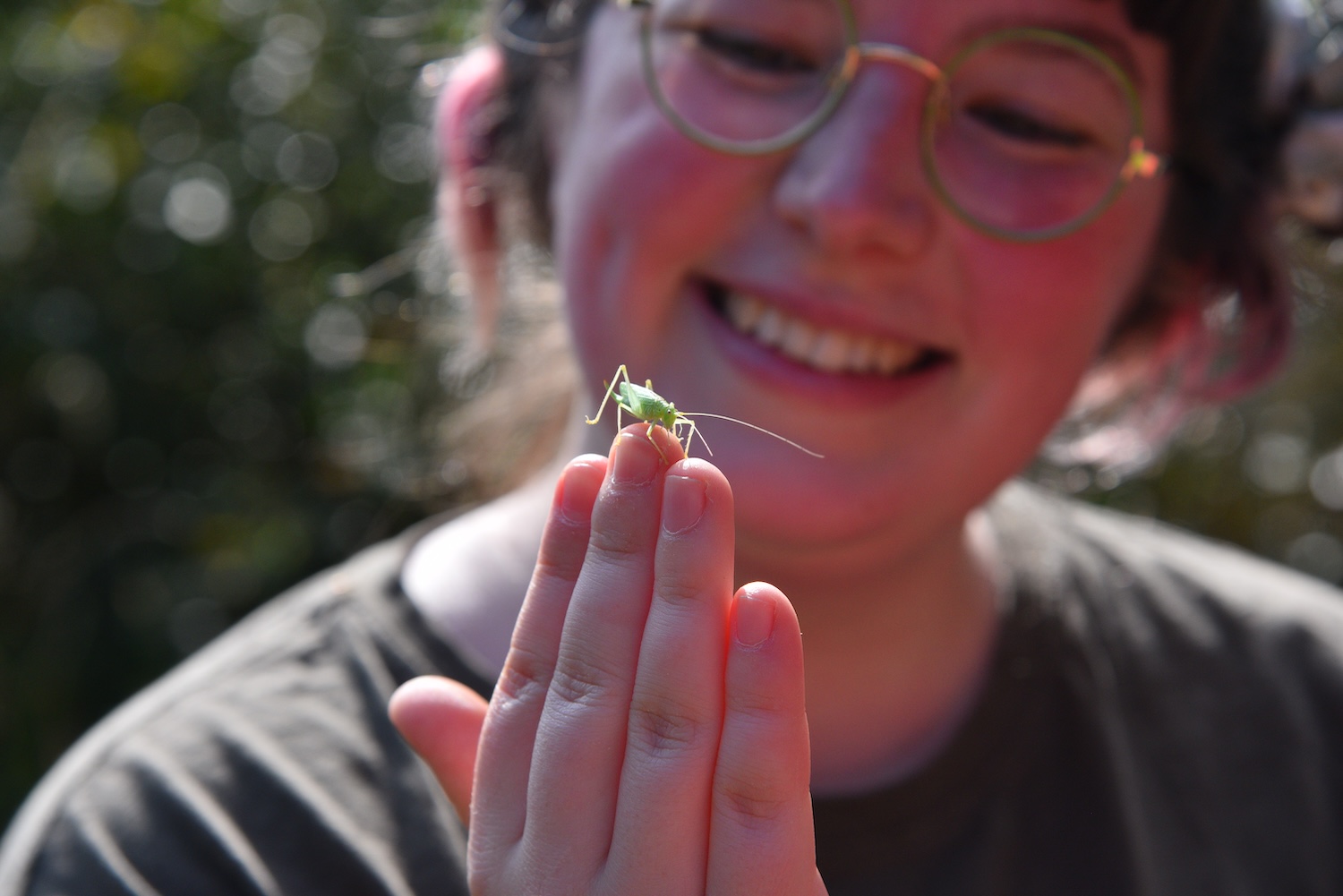Whether it’s mild and bright, or frosty and grey, within a few weeks our attention will turn to winter – so now’s the time to prime your garden for the frosts ahead.
While the weather is mild, galvanize your garden ready for the chills of December and January. Make sure you’ve got fleece or fleece bags ready to put over tender plants such as cordylines, hebes, tree ferns and other semi-hardy plants once the frosts arrive.
Pull on your wellies and venture into your borders – remove old leaves from around roses and other deciduous plants and chuck them onto on the compost heap, then mulch your borders with compost, well-rotted manure or bark.
Colours for the cold
If the weather’s not too cold and there’s no frost in the ground, plant any bare-root hedging or fruit trees, and for some winter colour in the garden, try a few attractive shrubs such as witch hazel, skimmias or leucothoe. Make sure they’re firmly bedded in to prevent any swaying in the winter winds. If you’re a fan of the huge variety of tulips that are now available, wait a while before you plant your bulbs – November is the perfect month to dig them in.
Continue planting pansies, wallflowers and winter bedding; the sooner it’s done the better. If we get a frosty spell, winter pansy flowers will droop but once the sun comes out, they’ll thaw out and pop back up, giving colour even on a cold day.
Now that most of the herbaceous perennials have finished, cut back phlox, lupin and delphinium stems to near ground level, leaving a few inches to give clumps some protection against extremes of weather. Reduce stem lengths on roses to prevent them rocking and loosening in the wind.
Wise precautions
Check heaters in glasshouses are working to avoid any last minute panic when temperatures plummet. If we get a cold spell, open doors on greenhouses occasionally to allow some fresh air in – this is especially important with paraffin heaters, where fumes build up and you can soon lose the plants you’re trying so hard to keep alive.
Don’t forget to drain hosepipes and remove or protect water features that won’t be used again until next spring to prevent frost damage.
Once the bad weather arrives, don’t forget bags of rock salt, outdoor tap covers, snow shovels, and window scrapers.
Bursts of brightness
As the end of November approaches, many people start to purchase Christmas houseplants and one of the best loved is the glorious poinsettia, which delivers an instant colour hit. They like good light during the day and a warm room at all times – but they hate draughts, so for best results, avoid plants from street stalls or display racks inside supermarket doors. To keep your poinsettia healthy, water it only when the soil is dry and, if you want it to last until next year, try to keep it in a room with no artificial light from September onwards.
If you have a cooler room, brightly coloured cyclamens are ideal. They require good light at all times – but be careful not to overwater them! Only water just as the foliage begins to wilt and make sure any excess is removed from saucers after 15 minutes. Other plants ideal for Christmas colour are the Christmas cherry with its shiny red-orange berries; Christmas cacti, which produce beautiful red, pink, orange, white or lavender flower; and azaleas, which will flourish in either a warm or cool room and are very easy to keep, though they like a lot of water.
Botanical gifts
Many garden centres offer planted arrangements in bowls and baskets, which can be gift-wrapped, making them an ideal present. For a living gift, consider buying a shrub for the garden or a planted-up tub or hanging basket specifically designed for winter colour.
Why not have a go at making a fresh wreath for your front door – they’re relatively straightforward if you use an oasis base, and you can forage for what you need in your garden or local hedgerows – holly, ivy, coloured foliage, berries, Christmas roses, conifer sprays – and why not include dried fruits and nuts and cinnamon sticks? Keep the oasis moist with a spray and your wreath should last till Christmas ends.
Caring for your tree
From the end of November, freshly-cut Christmas trees will be available. When you get your tree home, put it in a stand or pot that can be kept moist, as warm temperatures and dry air inside the home make the tree absorb water very rapidly. Keep away from hot radiators, open fires and TV sets. This also applies to rooted trees, especially if you’re planning on planting it in the garden after Christmas.
When choosing your tree, don’t forget to have a look inside the garden centre. Most put on spectacular Christmas displays. There’s always a multitude of baubles, garlands, lights and lit villages and if you don’t want a real tree, there’s an excellent range of artificial ones which can be difficult to tell from the real thing.
Finally, don’t forget our feathered friends – keep your feeders topped up and offer fat balls and specialist feeds, as well as a regular supply of fresh water.







